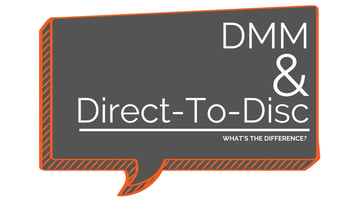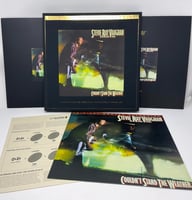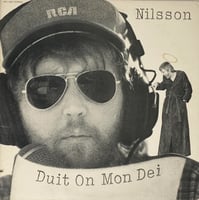Originally published August 8, 2020|Vinyl Community Discussion
Labelography - How to Find What Can Be a Great Sounding Record!
Originally published June 7, 2020

Just because it's pressed on vinyl, doesn't mean that it is going to sound good. There are good pressings and bad ones. In the era of reissuing digital transfers to vinyl, many are searching for vintage pressings—this way, they can hear all of that analog goodness. However, not all of the older pressings sound good either. So how do you know which pressings sound good? Well, it just so happens that you can get pretty close to finding a vintage record that has a good chance of sounding good by merely looking at the label.
This article touches on a few popular vintage labels to look for to improve your odds of finding a good sounding record in the wild. Please note: While these labels have a good reputation and are generally sought after, it is not a general rule of thumb that all recordings and pressings that feature these labels are going to be audiophile quality records. Let's get started!
The Columbia "Six Eye" Label
.webp?width=430&name=rs=w_1280%20(1).webp)
Columbia Six Eye Record Label
Picture Source - LondonJazzCollector
The Columbia "Six Eye" labels were used in the '50s to the early '60s, and are an excellent way to determine first pressings and a great sounding record. Aside from looking beautiful, some may ask why the "Six Eye" variants are desirable and sound better.
The earlier the record, the closer the pressing is to the original master tapes.
The stampers used in this era of Columbia's history sounded great.
If you're looking for some sweet-sounding jazz records, it's best if you hold out for a VG+ or better copy on the "Six Eye" so that you can have the best listening experience. However, depending on the record, be prepared to pay the cost. Some of the more desirable records on the "Six Eye" label are a bit salty when they are in minty condition.
Columbia "Two Eye" Labels
.webp?width=430&name=rs=w_1280%20(2).webp)
Columbia Two Eye Record Label
Picture Source - LondonJazzCollector
The "Two Eye" labels were in print from late 1962 until 1970. Similar to the "Six Eye" variants, the "Two Eye" pressings while less attractive, generally sound great and offer a more comprehensive selection of genres including rock releases. If you found a record on the"Two Eye" Columbia labels, you've done well! Something else to look for are the words “Guaranteed High Fidelity” at the bottom for mono LP’s as seen in the picture. These indicate the earliest of the "Two Eye" variation.
RCA Living Stereo "Shaded Dog"
.webp?width=430&name=rs=w_1280%20(3).webp)
RCA Living Stereo "Shaded Dog"
Picture Source - www.shadeddog.com
Early RCA Living Stereo "Shaded Dog" pressings are highly sought after because of their quality. There are some caveats, however. For example, if the dog has plain red behind it instead of the darker shade like you see in the picture above, those are known as "White Dog" pressings and aren't as desirable. Something else we should be aware of; if the label (or the sleeve) says "Dynagroove," these aren't the desirable "Shaded Dog" pressings.
If you're digging through a crate of records and you see a "Living Stereo" banner across the top, you may have found yourself a shaded dog. Still, you must look at the record label first to ensure there is a shade behind that dog! It isn't easy to find one in clean condition, though, but if you do, pick it up!
Atlantic "Plum" Label - Presswell & Monarch
.webp?width=430&name=rs=w_1280%20(4).webp)
Atlantic Plum Label
Picture Source - CVINYL.COM
Identifying pressing plants may go outside the bounds of labelography; however, some seek out Presswell pressings. They can found on the earlier red and purple, AKA "Plum" Atlantic labels as well as the more popular green and red label. Overall, the older "Plum" labels are more difficult to find and use the older stampers. However, the only way to determine a Presswell pressing for sure is to look at the matrix numbers on the run-out groove or "deadwax." We are officially outside the scope of this article; however, a Presswell is identified with a "PW" etched in the run-out groove. If they say "LW" or "MO", they are the Monarch pressings. NOTE: It is really up to your ears. The opinion of some is that the Presswell pressings are elite. Others prefer the Monarch pressings. The fun part of collecting vinyl is that you can get a copy of each and listen for yourself!
Deutche Grammophon "Tulip" Label
.webp?width=430&name=rs=w_1280%20(5).webp)
Deutche Grammophon Tulip Label
Picture Source - joostvandernet.nl
The older Deutsche Grammophon pressings are more sought after because these pressings were still analog. An audiophile recording and noiseless surface aren't guaranteed, however, if you're crate digging, and you have a hankering for some classical music, and you come across a DG release, check the label for the iconic tulips around the label and those are the ones to grab. The newer variations have a white and blue ring around them. Some of them tout "audiophile digital" pressings. These generally don't sound good, but again, it's up to your ears, and if its a release you want, go for it!
Vertigo "Swirl" Label
.webp?width=430&name=rs=w_1280%20(6).webp)
Vertigo Swirl
Picture Source - CVINYL.COM
Vertigo focuses on the rock and progressive rock genres and, in general, produced great sounding records. Additionally, the older ones, as pictured above, are generally valuable and collectible. They are quite rare, in any case. Vertigo's sales numbers were meager and caused them to make limited runs of records. Because of Vertigo's lack of success back in the day, many of the early Vertigo selections are now valuable and collectible. If you find an old Vertigo Swirl label in the wild, they're worth picking up.
"PROMOTIONAL COPY" Labels
.webp?width=430&name=rs=w_1280%20(7).webp)
"PROMOTIONAL COPY" Labels
Most, if not all, record companies release "PROMOTIONAL COPY" records. These early copies are sent to radio stations before records are officially released so that they can play the songs and promote the release on the radio and other forms of media. Most promo copies are marked"PROMOTIONAL COPY" or "SAMPLE COPY" on the label, and some of them have a plain white label. If you can find promo copies in clean condition, these are desirable variations because they are some of the earliest pressings of the album, maintaining as much quality as possible. Also, they weren't made for the masses, so they're harder to come by than the regular release.
Conclusion
It is worth repeating; we are NOT saying that if you find a Columbia "Six Eye" that you will have an audiophile record. Instead, this is an essential, yet superficial list of label variations to look for while crate digging so that you can quickly detect pressings that have a good reputation for their quality. There are countless labels and variations of each label out there. The number of resources compiled, including books and web resources that are dedicated to the labelography of specific genres and formats, is abundant. Their information is well researched and detailed. Some labels are desirable for their collectability, while others are valuable, and some are simply sought after for their design. I enjoy all of the designs in this article. Others that I enjoy are the '60s and '70s ATCO labels, DERAM, Harvest, and Apple Records labels.
At the very least, this article demonstrates just one of the many dimensions of collecting vinyl that make it so enjoyable for many. Keep collecting. Keep spinning. And most importantly, have fun with your record collection!
If you are interested in vinyl record encapsulation or any of our other services, please visit us at aagservices.org to learn more about how you can bring your collection to the next level! info@aagservices.org



